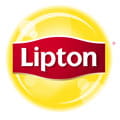Making the Most of the Nutrition Facts Label Infographic

Eat Smart with Food Nutrition Labels
The Nutrition Facts label can help you make healthier choices. Here’s what to look for:
- Start with serving information.
This will tell you the size of a single serving and how many servings are in the package.
- Check total calories.
Do the math to know how many calories you’re getting if you eat the whole package.
- Limit certain nutrients.
Compare labels when possible and choose options with lower amounts of added sugars, sodium, saturated fat and trans fat.
- Get enough of beneficial nutrients.
Eat foods with nutrients your body needs, including calcium, dietary fiber, iron, potassium and vitamin D.
- Understand % Daily Value.
- The % Daily Value (DV) tells you the percentage of each nutrient in a single serving in terms of the daily recommended amount.
- To consume less of a nutrient (such as saturated fat or sodium), choose foods with a lower % DV (5% or less).
- To consume more of a nutrient (such as fiber), choose foods with a higher % DV — 20% or more.
Albertsons Companies' Sincerely Health
Nationally Supported by

